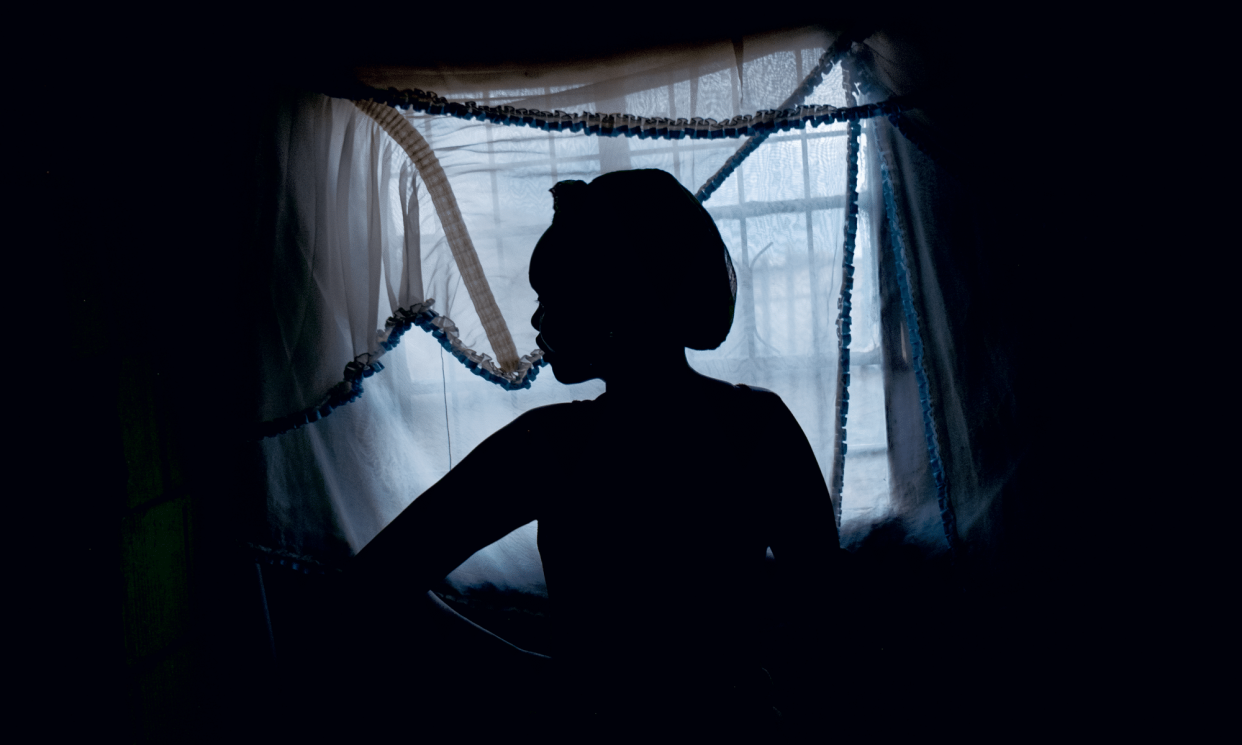‘In South Africa, you hear of disappearance all the time’: one photographer’s search for his sister’s missing years

When the photographer Lindokuhle Sobekwa was six years old, his half-sister Ziyanda disappeared. On the day in question, the siblings had had a fight, Ziyanda, who was about to turn 13, having demanded that he hand over some money he’d been given by his father. Lindo refused, and ran away, and his rebellious sister duly chased after him. But then, disaster. He wasn’t concentrating on the traffic; a car hit him, an accident that broke his spine. He would spend the next three months in hospital. Ziyanda, though, kept on running, not even stopping to check up on him. It would be 11 years before he saw her again.
No one in the family knew where she was until, in 2013, Lindo’s mother discovered that she was living in a hostel not far from the family’s shack in Thokoza, a township east of Johannesburg. She was very ill, and there were scars on her back, but now she came home at last, no longer the wild girl of old. Her brother was angry. He had a lot of questions. But the two of them didn’t talk much. She needed to rest, and something told Lindo, then about to finish secondary school, that he should tread carefully.
In his free time, he was studying at a Thokoza photography education programme called Of Soul and Joy. On the only occasion that he tried to take her picture – the light had fallen on her face in such a beautiful way – she gave him a stony look, as if to say: “If you take this photograph, I’m gonna kill you.” Thanks to this, when she died soon afterwards, their mother could find only one image of her for the funeral notice: in a family group, taken at Christmas. His mother carefully cut her face from this picture, to be scanned and enlarged. The little square she then kept in the Bible that she read every night by candlelight.
In Sobekwa’s new book, I Carry Her Photo With Me, there is a black and white portrait of his mother, Nomasindiso, reading this Bible in bed, her finger slowly tracing a line. It is, he agrees, an incredibly intimate picture, but it also speaks to the culture of South Africa’s townships where electricity is patchy, if available at all. “Looking at stuff at night by candlelight does something in terms of the detail you see,” he says. “It is hard to distract my mother when she is reading.” His book is first and foremost about his sister, and in it, he traces her footsteps, gathering up the scant things she left behind, and talking to those who knew her: as he puts it, it comprises a series of absences that form “a kind of map” on the page, and in this sense, it’s intensely personal.
But like his mother, who only does what many thousands of other South Africans must when she lights a candle at bedtime, Ziyanda is also an everywoman. “She’s not the only one this ever happened to. In South Africa, you will hear this story all the time. Every taxi driver will tell you about an uncle or someone else in their family…” Even in Sobekwa’s own family, Ziyanda wasn’t the first to disappear. “You can trace it back to my grandfather, who first came to Johannesburg to work in the mines,” he says.
Putting the book together hasn’t answered all his questions, nor has it resolved his grief. “This is an ongoing dialogue,” he says. “It’s sort of open-ended… unresolved.” But so much good has come out of it even so. For one thing, the work itself is so beautiful and so stirring: a pink party dress against bright green breeze blocks; a young woman in red with her back turned to the camera, every bit as reluctant as Ziyanda was to have her portrait taken; two shadows looming over a grave in the Eastern Cape (Ziyanda grew up in the countryside there, raised by her grandmother, while her mother worked as a live-in domestic worker in Johannesburg, and it’s also where she is buried).
For another, there is the effect it has had on his family. Sobekwa has learned a lot. He knows now that she suffered: “She was born in 1989, before the release of Mandela. It was a very violent time here, and a lot of people died. They sent her away [for her own safety], but perhaps that was also a kind of violence for her.” But like many South Africans, he also believes in ancestors: “I think she’s with us, that she’s guiding us,” he says. “My sister was a person who wanted our family to have uncomfortable conversations, and I’ve been able to bring us to do that: to talk about all the things a family should. It has opened an interesting path for us, and we are still walking down it.”

 Yahoo News
Yahoo News 
